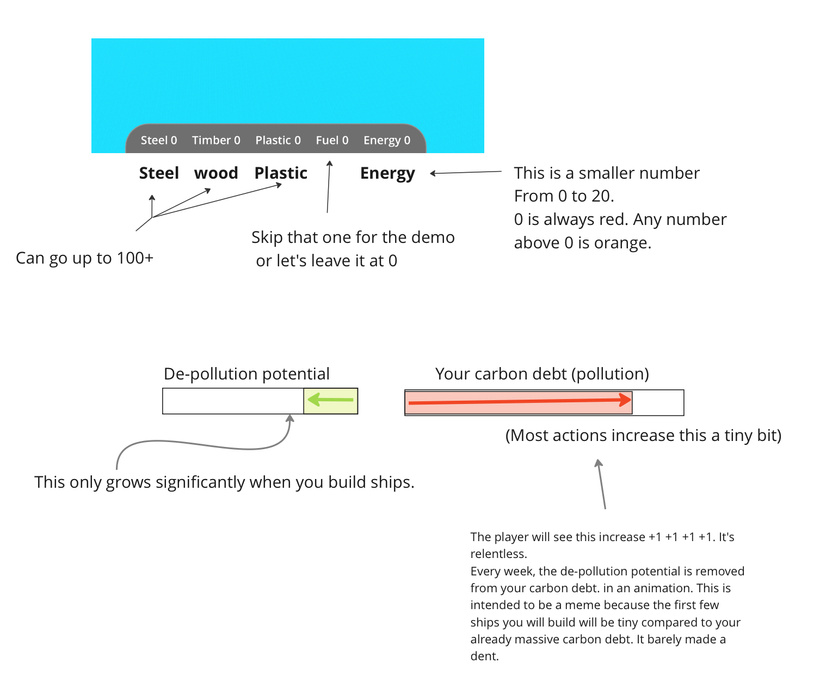Below you will find pages that utilize the taxonomy term “Indie Dev”
Shipyard: The story so far
A welcome video recorded and edited by Roberto Cuevas.
- We are using open source tools such as Godot Engine, allowing us to share and benefit from all the creative solutions and workflow improvements from the community.
- The Shipyard will stay indie to keep all creative control and make a game we want to play.
- Your patronage is appreciated and helps support our crew. Sharing the Patreon link or this video with friends also helps bring the game to life!
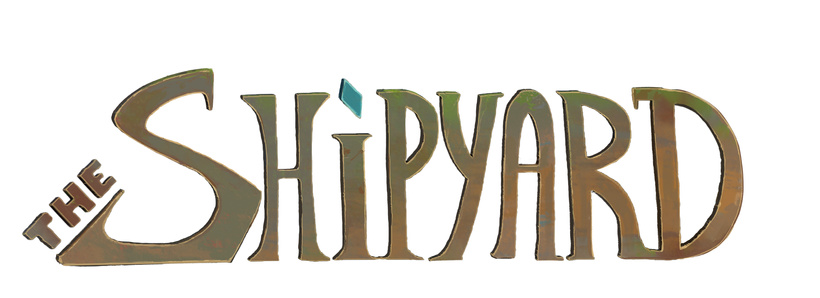
PS: We want to thank the yardies who are supporting us already, y’all are the best <3
Dev Log #2.5 - Ship-building UI and resource flows
Building a ship requires parts and components, which you make with metal plates, composites, and recycled ingots. Various buildings produce these materials and refine them into ship parts.
Some of these buildings consume electricity (🪫), which at first is easy to procure, but as the game progresses and storms keep knocking down the grid, you find yourself having to improvise a DIY micro grid (⚡️) for the shipyard to keep going.
Dev Log #2.4 - The separation of programming and art

Generally it’s considered best practice during prototyping for the art to be done in a separate pipeline, to work on top of “cubes that play well”.
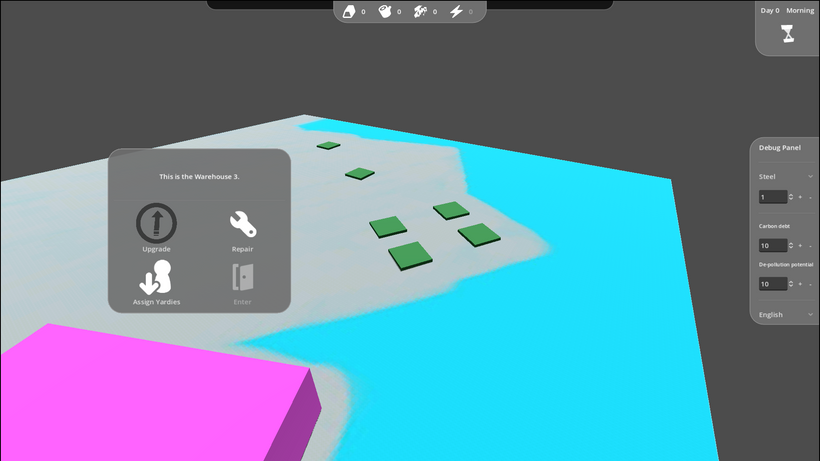
Godot Engine Programmer Evans (Giiba) calls this the “sea of cubes”. The point is maximum readability, and programmers to not need to wait for art.
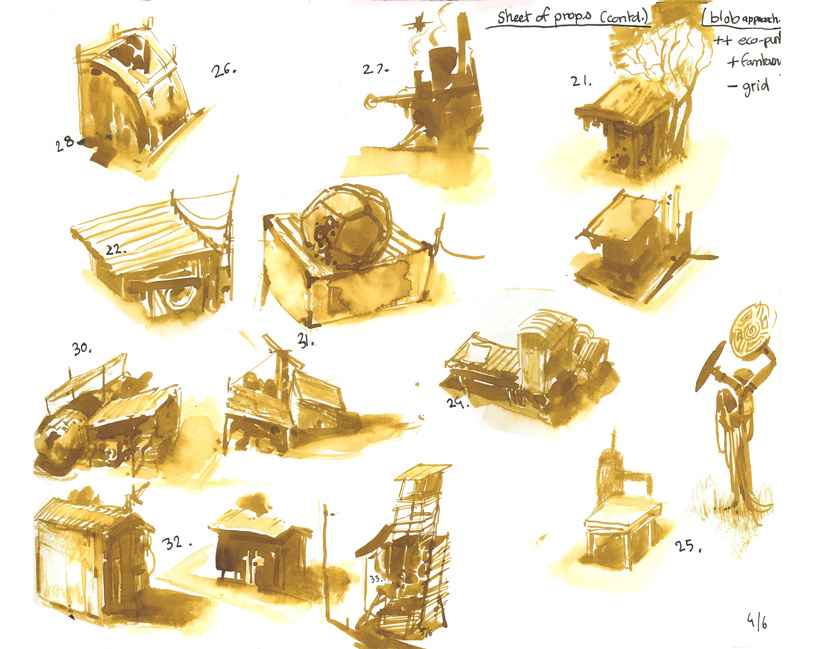
Meanwhile, the art iterations are about exploring the total possibility space of what this game could be, what it could look like.
Dev Log #2.1 - Scenarios
From the archives; an early prototype of the game took place in South America and was inspired by Buen Vivir, cinco saberes, sailcargo movement, degrowth, etc. Each scenario has unique buildings and resources, and the “Costa Buen vivir” (temp name) scenario is all about wood and nature and smaller scale de-pollution work.
The scenario we are working on first for the alpha and beta demos will be “sea of Hirwazh” and take place in the Breton coast of Finistère (“the end of the land”).
Dev Log #1.9 - Game design & Marketing
It’s not just art and programming, there is also game design, and even marketing.
The tech tree allows you to learn how to construct new buildings and ships, but also weathering the storm better when incoming events knock you off course. The buildings might be grouped by type, so that we can design items and perks that affect a thematically coherent group. Perhaps advisors could be associated with up to two of these colors (Industry, reycycling, organize, and Design).
Dev Log #1.8 - Implementing menus and scenes
Rie has done some incredible work and we now have a way to transition from the top down camera to inside the hangar, and from inside the hangar to the loft.
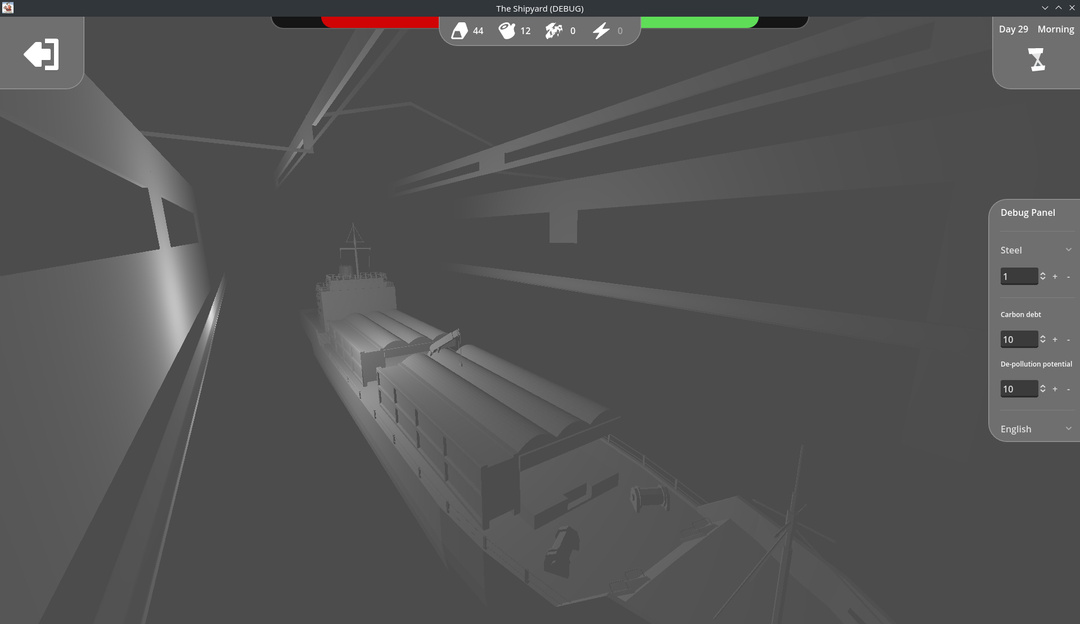
The resource bar was also implemented by Rie, following this design diagram:
